Features
I'll Sing My Song To The Infinite Sea
The Who Albums Worst To Best
by Benjamin Ray
This is not a Who album, but because Pete Townshend and Roger Daltrey are here, it gets the Who name. Two discs without Keith Moon was bad enough, but without John Entwistle, the magic is gone. This may sound like parts of the latter-day Who, but it is not, nor is it really a worthwhile effort even on its own merits.
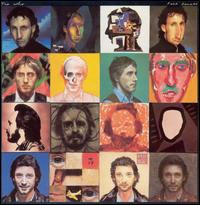 9b. Face Dances (1981)
9b. Face Dances (1981)
The first album post-Moon had a lot to live up to. Signs of fatigue were already showing on Who Are You, and this continues the downward spiral. There’s almost no heart and no spark left here, especially when compared to Townshend’s solo work from this time. Daltrey sounds bored, and the album’s lone hit, “You Better You Bet,” is repetitive and has very little to say. “Another Tricky Day” is decent, at least.
9a. It’s Hard (1982)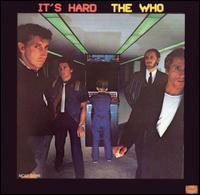
This and Face Dances are tied for 9th, with this one being worthwhile mainly for “Eminence Front,” a chilled synth-rocker that bookends the band’s career and is one of their best songs post-1975. The rest is forgettable and lackluster, and without Moon the other three didn’t really want to be doing this band thing anymore, so they went their separate ways. Good thing.
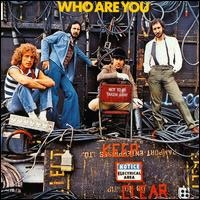 8. Who Are You (1978)
8. Who Are You (1978)
Keith Moon’s final album and home of the band’s last great song, “Who Are You,” which tells a story with both bravado and vulnerability, the way the greatest Who songs always do. The rest of the disc is hit or miss; “New Song” chugs nicely with self-loathing lyrics, “Music Must Change” has no drums at all and is better for it, and “Trick Of The Light” is a solid Entwistle number. “Sister Disco” is not great by any means, a lame attempt by the band to stay relevant, but as a whole the disc is a fine send-off for the band’s drummer, one of rock’s greatest.
7. A Quick One (1966)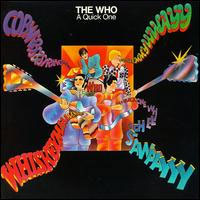
The first appearance of a song cycle, which the band would of course use to greater effect on its next four albums, A Quick One tries to do many things and doesn’t always succeed. The Townshend originals are mundane, the title track is more interesting for what it suggests than what it actually accomplishes, and the Motown covers are perfunctory; by this point, the band’s contemporaries had moved past covers and were writing their own killer originals.
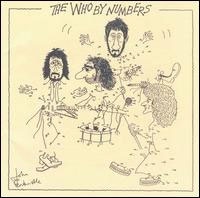 6. The Who By Numbers (1975)
6. The Who By Numbers (1975)
In what was a smart and necessary move after Quadrophenia, the band completely downscaled its approach and expectations and released a short album with no theme or unity, just some fun rock and plaintive pop songs. Townshend offers no shortage of self-loathing (the chugging “However Much I Booze”), but the propulsive “Slip Kid” and the accordion sex stomp “Squeeze Box” are both fun and spirited. The back half of the disc gets tiresome, though, and the band would take a deserved break before recording their next album three years later.
5. The Who Sings My Generation (1965)
Although not too different from any other British Invasion debut you’d care to name, the Who’s unique, immediate voice stands out instantly. It’s not often that a band can write its calling card and one of the songs of a generation on its debut, but “My Generation” did just that for a number of kids finding their voice and questioning their parents’ values at the same time in 1965. Some people swear that this album, along with the non-album singles of the same time like “Substitute,” constitute the real Who, and their argument has merit.
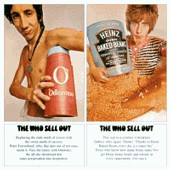 4. The Who Sell Out (1967)
4. The Who Sell Out (1967)
Perhaps the band’s most underrated album, Sell Out is basically one big joke that obscures some very good songs and sets the stage for the major stardom that followed. The crashing, swirling cheating anthem “I Can See For Miles” is one of the band’s top three songs of all time, Moon’s ferocious yet restrained drums employed to great effect, especially in the introduction. The sense of experimentation is rampant too, as it was for everyone in 1967, on songs like “Armenia City In The Sky” and the band’s second mini-opera, “Rael,” while fake and hilarious commercials recorded by the band and actual Radio London snippets are mixed in between songs, giving the whole thing the feel of a pirated radio broadcast. It’s a cool conceit that mostly works, although on the second side it’s mostly forgotten for more serious songs like “Sunrise” and “Rael,” the latter from which Townshend would outright steal the midsection for “Sparks” and “Underture” on Tommy.
3. Tommy (1969)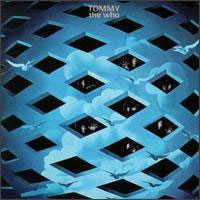
The big one, the first “rock opera” (more of a song cycle, really) and the one that busted this band through to superstardom. The story is a bit goofy but makes sense, which is more than you can say for a lot of concept albums, and some of the songs function only to push forward the narrative. Take those out and you are left with some great rock and roll that rarely sounds dated, save maybe for “Pinball Wizard,” which has been run into the ground by rock radio. Far better is the instrumental “Sparks,” “I’m Free,” “We’re Not Gonna Take It” (which encompasses the “See Me, Feel Me” part that will sometimes get released as a standalone song), “The Acid Queen,” “Overture” and even “Welcome.”
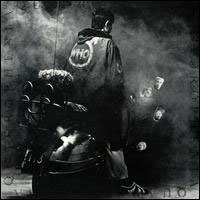 2. Quadrophenia (1973)
2. Quadrophenia (1973)
Why the band attempted to write a second rock opera after playing the first one to death and seeing the Lifehouse project fall apart is beyond me, but we are all glad they did. Quad rumbles through many themes that Townshend perfected – teenage angst, loneliness, questioning one’s identity and place, the culture at large – and sets it to a backdrop of Mod subculture that gave the band its rise in the first place. The emphasis on the personal and the stellar performances throughout make this one uniformly excellent; other than “Dr. Jimmy” and “I’m One,” there isn’t a bad song in the bunch. Musical themes are repeated throughout, much like Tommy, and certainly the story is a bit bleak, ending with the main character stranded on a big rock in the sea wailing to the heavens, but damn if Daltrey doesn’t inhabit Jimmy just as much as he did Tommy. From “Drowned” to “5:15” to the plaintive “Sea And Sand” to the solid “Bell Boy,” the third side (or first half of the second disc) is near perfect, while the instrumental title song has an energy that ties all the themes together and follows the killer opener “The Real Me” perfectly. And then it all ties together on “Love, Reign O’er Me,” which marries synthesizers and guitars as effectively as anything on Who’s Next and ends with Daltrey’s scream over crashing, pounding drums meant to simulate waves. It will send a chill down your spine. Fantastic album.
1. Who’s Next (1971)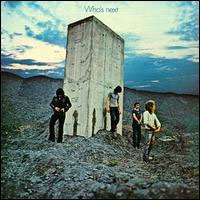
Ranking just above Quadrophenia as the band’s finest hour, and certainly their most self-assured, this is everything right about the Who. Built from an abandoned rock opera meant to be even more epic than Tommy, the resulting album shows traces of that original in certain spots but mostly retains a unique identity...in that it’s simply a BS-free, near-flawless set of rock songs. Townshend started using the synthesizer but used it sparingly and for color, as a complement to his guitar, resulting in a set of nonstop classics like “Baba O’Riley,” “Bargain,” “The Song Is Over,” “Goin’ Mobile” and “Getting In Tune.” The stunning final track “Won’t Get Fooled Again” is a stone cold classic, of course, inverting the “My Generation” rally into a tired defeat, that the hippie dream of change was all for naught, and that all we can do is hope our elected leaders will serve the people and not the donors, corporate backers and personal greed. It’s as relevant in 2015 as it was in 1971, and it is undercut with slashing guitar, Daltrey’s primal screams and an unrelenting energy.
